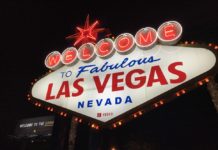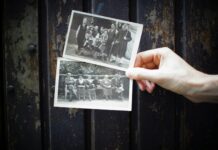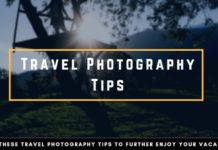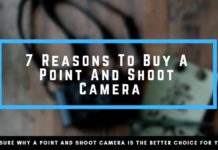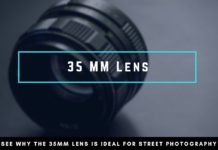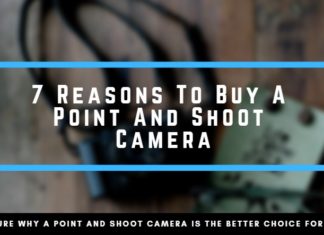Street Photography doesn’t need to focus on gear too much. It is more the experience being on the street and capturing everyday moments as they are passing by. Showing how the world can look like to others ands that there can be beauty in everything.
Nonetheless, Street Photography is more fun, when done with the right tool. There are so many cameras out there, that differ in specifications and can be quite confusing when looking for something new to buy, that it is better to thank twice, what You really need.
Buying a new Street Photography camera is not an easy task and any mistake can be costly. To give You a guidance in and sort out the jungle of cameras, here are the things that You should be looking for when buying a new Street Photography camera.
Camera Size
We associate bigger cameras with higher quality. Just think about the professional equipment of portrait photographers. The bigger the camera and the lens, the more respect the photographer will get.
Although we know that quality doesn’t necessarily correlate to the camera size anymore. Technology has become so advanced, that we can get the same image quality also in smaller camera sizes.
Looking at the sheer amount of megapixels, for example, we can get more than 20 Megapixels in cameras that fit easily in our palm or jacket.
In Street Photography, we don’t need that extra percent of image quality but prefer a smaller sized camera.
A big camera is a huge disadvantage in Street Photography for many reasons.
First of all, our goal is to be unobtrusive as we want to get candid pictures. With a camera as big as a Nikon D1, we won’t be really able to walk on the street unnoticed and snap away some pictures.
The camera should be as little as possible while being comfortable in Your hands.
You don’t need to make any trade-offs in terms of image quality. A Sony Alpha 7RIII is a full-frame camera that is perfectly fine for Street Photography.
Smaller sensors in the range of APS-C or Micro Four-Thirds sill have excellent image quality while being even smaller.
Aside from the advantage of looking more like a tourist and making the life easier on the street, a smaller camera also has the advantage that You are more likely to take it with You.
For a camera as small as the RicohGR, You might carry it in Your pocket jacket and don’t need an extra camera bag. This allows You to take the camera with You during the commute or everyday life and capture scenes that You find interesting spontaneously.
The smaller the camera the better for Street Photography.

Design
Not only the camera size is important when it comes to Street Photography and the reactions of people, but also the camera design.
Believe it or not, but people are more friendly when they see some vintage design and think You are photographing with an old analog camera. Somehow, they are more open towards the old technology and react better.
Luckily, a lot of manufacturers have discovered the vintage design for themselves too. There are a lot of modern cameras out there that resemble those old school cameras.
When I bought my last camera, the Fujifilm X100F I made the conscious choice to go for the silver look since I believe that this style is more in the direction of how people image film cameras to look like.
Although I wouldn’t rate the importance of design very highly, there are a lot more important aspects of a Street Photography Camera, when You have the choice and different options available, I would recommend a design that resembles old analog cameras.
I would avoid bright flashy colors, like those red painted cameras that are becoming more available as well.
Our goal should be to go unnoticed on the street. Therefore some classic silver look or at least a black colored design is the best choices for a Street Photography camera.
Image Quality
When we talk about cameras we can’t disregard the pure image quality of the final photographs.
Nonetheless, I feel that Street Photography isn’t really about image quality, but more the content of the photograph.
Therefore I believe that almost all of the modern cameras are pretty adequate when it comes to the RAW image quality in Street Photography.
There might be differences between a mobile phone, a compact camera, and a more expensive mirrorless camera, but when You decide to invest in a modern camera, it doesn’t make a huge difference if You are willing to invest in a mirrorless camera for less than $1000 or a point-and-shoot camera under $300.
Some people may claim that they are able to see the difference between a mid-range mirrorless camera like the FujiX100F and an expensive Leica, but for me, I don’t really see the difference and doubt that many do.
If You have the money available and want the maximum image quality, then buying a Leica or a sony 7RIII to get the full-frame sensor benefits might be worth for You, for the average user, an Olympus Pen-F yields the same results while only costing a fraction of a Leica.
All modern cameras feature at least a sensor with 20 Megapixels, which is more than enough for a gallery print.
There is only one exception and that is night photography.
If You want to shoot a lot in low light and without a flash, You should avoid micro-four thirds systems as they don’t perform very well in these situations.
Other than that, all the modern cameras feature excellent image quality from my point of view, which is why I value other things like the size and weight higher in my decision to buy a new Street Photography Camera.
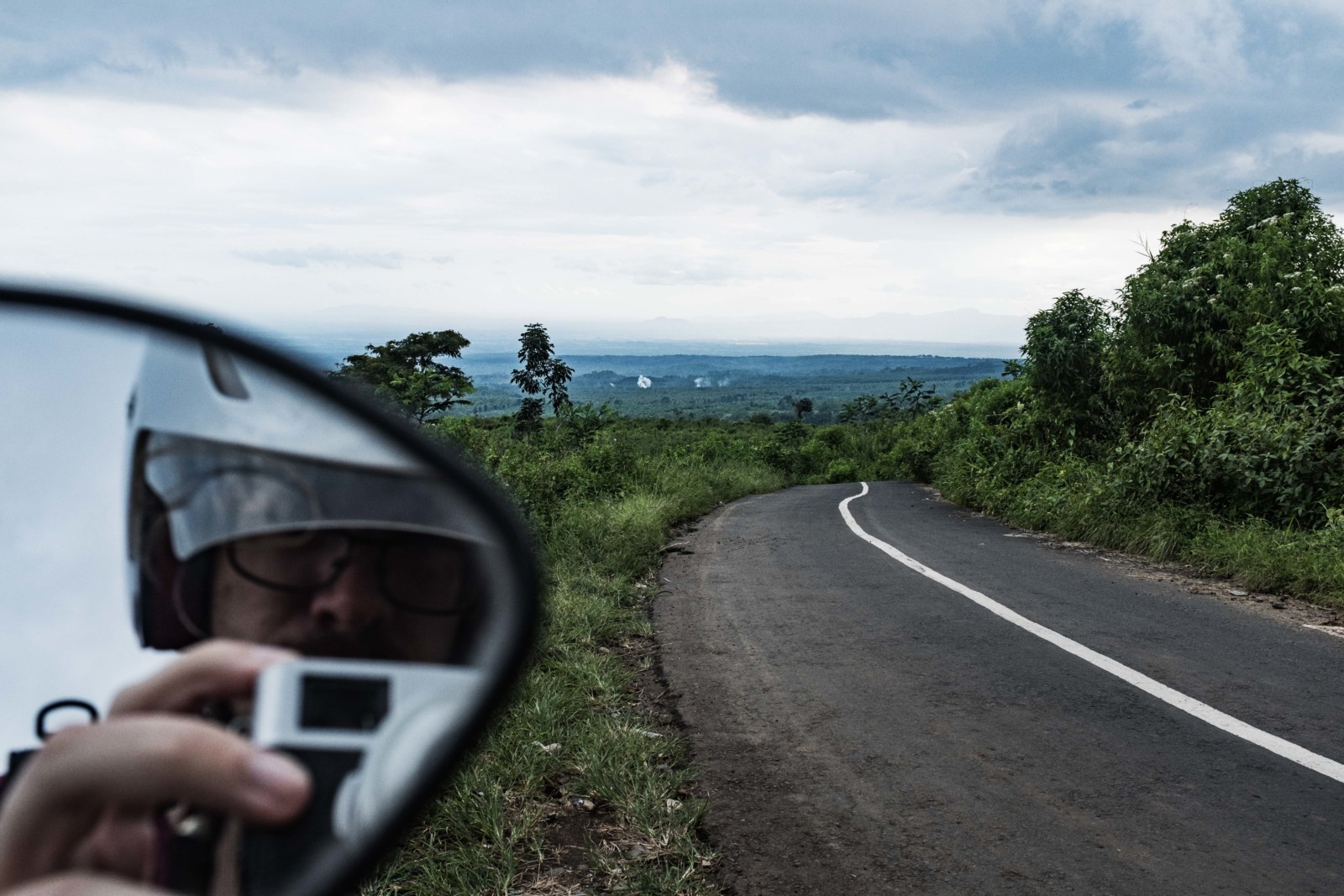
Camera Lens
Obviously, the lens has a huge impact on Your Street Photography.
When going for a new Street Photography camera, think about the type of lenses You might need for Your work.
Fixed Lenses
Are You comfortable only shooting with a fixed focal length and don’t change Your lens anyway? Then there are cameras out there that work with a fixed lens and don’t allow You to change the lens.
Those cameras can work great as they usually offer a high image quality for a relatively little price.
They also save You some money because You aren’t tempted to buy new lenses on the regular. You invest in the camera one time and are good to go for the next years until You decide to buy another camera.
Having a camera without changeable lenses makes You focus more on the photography itself, rather than the gear. You have the camera and have to work with what You got and can solely improve on Yourself. There are no options to upgrade the camera, so don’t waste Your time thinking about new gear, but rather invest that time in Yourself.
Changeable Lenses
Alternatively, there are of course more than enough cameras where You are able to change the lenses for Street Photography cameras.
Before buying a new camera think about the types of lenses You want to use.
Do You have vintage lenses at home that You want to try on a new digital camera? Then you likely need a full-frame camera like the Alpha 7rIII which lets You use old lenses with adapters. The Sony E-Mount lenses are also one of the best and are designed in cooperation with Zeiss.
Or do You have already modern lenses at home or have a friend who might lend You some of his gear?
Then make sure that the lenses and cameras are compatible.
Depending on the sensor size the lenses also change in diameter. Make sure that lenses fit on Your new camera.

Handling
There are two main factors that influence the handling.
First, The size of the camera and how comfortable You are holding the camera.
Second, the arrangement of buttons and how easy they are to control.
Feeling
Before, I told that the smaller the camera, the better it is for Street Photography. That is only half the truth, as the camera should also feel comfortable in Your hands.
Especially when You are used to a bigger DSLR with an extra battery grip, a Micro-Four-Thirds camera from Olympus might feel simply too small.
It doesn’t matter if the Olympus is technically better for Street Photography, if it doesn’t feel good in Your hands it is no fun.
If You are looking for a “classic” camera that has an analog feeling to it, You can decide for a FujiX100F.
In case, You are still looking for something better to grip, there are smaller cameras with a rubber grip out there like the Alpha 7RIII.
A Street Photography Camera should feel good in Your hands since You are walking with it and sometimes have to move quickly. Good Camera Straps might help You out to a certain degree, but at first, I would make sure that You are able to hold the camera comfortable with one hand and have a good grip, without the camera being too small or big.
Buttons
One thing I love about my RicohGR is that I can change every main feature with one hand. I am able to adjust the aperture, ISO or shutter speed with the dials, that are all in the range of my right hand.
That doesn’t sound like a huge deal, we have two hands after all, but if You get more interested in flash Street Photography, a camera that is as easily controllable as the RicohGR is a huge winner.
On the other hand, another favorite of mine, the FujiX100F does come a little short in that department. Although I can adjust everything through buttons as well, I have to lift the ISO/Shutter Speed dial to change the settings there which require me two use both hands. Another disadvantage with this camera is, that a flash attached to the hot shoe can make the handling a little more difficult.
If You don’t use an off-camera flash, the arrangement of buttons might not be important for You since You can use both hands without a problem.
Nonetheless, if You are looking for a Street Photography camera, make sure that the buttons are conveniently controllable and don’t require contorted maneuvers.
Viewfinder
There are two different types of basic viewfinders in modern cameras.
The Optical Viewfinder
DSLRs still operate with an optical viewfinder. When looking through the viewfinder, You are actually seeing what You are photographing through Your lens which is called “Through the Lens” or in short TTL. There is no “parallax” error, which means that the image that You are seeing through the optical viewfinder is directly Your resulting image.
The optical viewfinder is good for many reasons.
It doesn’t drain the battery life, as it doesn’t need the energy to run. The light is channeled through prisms, or other optics and not electronically through cameras. There is also no screen involved. However, there are status bars often at the bottom of optical viewfinders that display certain information.
Although the viewfinder is optical and not a screen, there is information that is also overlayed, like the autofocus points, or other grids.
The optical viewfinder also hasn’t any delay. You can move as fast as You want and since there are only prisms involved, the image through the viewfinder will be in real-time.
The Electronic Viewfinder
Mirrorless cameras don’t have a system set up like DSLRs where they can use prisms to guide the light through the lens and look directly in front of the camera. Instead, they use an electronic viewfinder, where the image of the sensor is displayed on a screen that resembles the viewfinder.
An electronic viewfinder has in comparison to the optical viewfinder different characteristics. Some for the better, some for the worse.
The electronic viewfinder is able to display much more information than the optical viewfinder. You are able to see the exposure in real-time and can even highlight areas that are too bright or dark and adjust the exposure accordingly.
While the electronic viewfinder is able to display much more information is very versatile and customizable, there is sometimes a noticeable lag when moving very fast, as the image processor is too slow to update in real-time.
This effect was more noticeable in older camera models and gets steadily better. Personally, the lag isn’t a problem for me, it is so minimal that I can ignore it and don’t need to make a fuss about it.
Another disadvantage that is more prominent is the higher battery drain. Since the electronic viewfinder is basically another LCD screen, the power usage increases very heavily. So if You are going for a mirrorless camera, extra batteries are a must.
Hybrid Viewfinders
Besides those basic types, there are also camera models, that combine both models. The FujiX100F, for example, has an electronic viewfinder and an “optical viewfinder”.
Calling it an optical viewfinder is an exaggeration though. You are basically just turning the electronic viewfinder off and are able to look through the hole, but not the lens. The image that You see is not identical to the sensor image, as there is a parallax error.
It is good to have the option, but I wouldn’t call it a viable alternative.
No Viewfinder
Then there are also cameras that have only the LCD-screen and no viewfinder at all. Those are typical compact cameras, like the RicohGR for example.
Those cameras save the cost of a viewfinder and rely on the user to use the LCD screen only. Seeing the low price and easy handling of those cameras, having no viewfinder doesn’t have to be a disadvantage.
With cameras that feature only one focal length, like the RicohGR You are accustomed to the field of vision very quickly, so You don’t need even the LCD-screen but can just shoot from the hip.
Your Choice
Before buying a Street Photography camera, think about if You really need an optical viewfinder. If You absolutely rely on an optical viewfinder, You have to go for a DSLR, which isn’t ideal for Street Photography but wouldn’t leave You any other choice.
If You don’t need a viewfinder at all because You are experienced with fixed focal lengths, then a camera like the RicohGR II can save You some money.
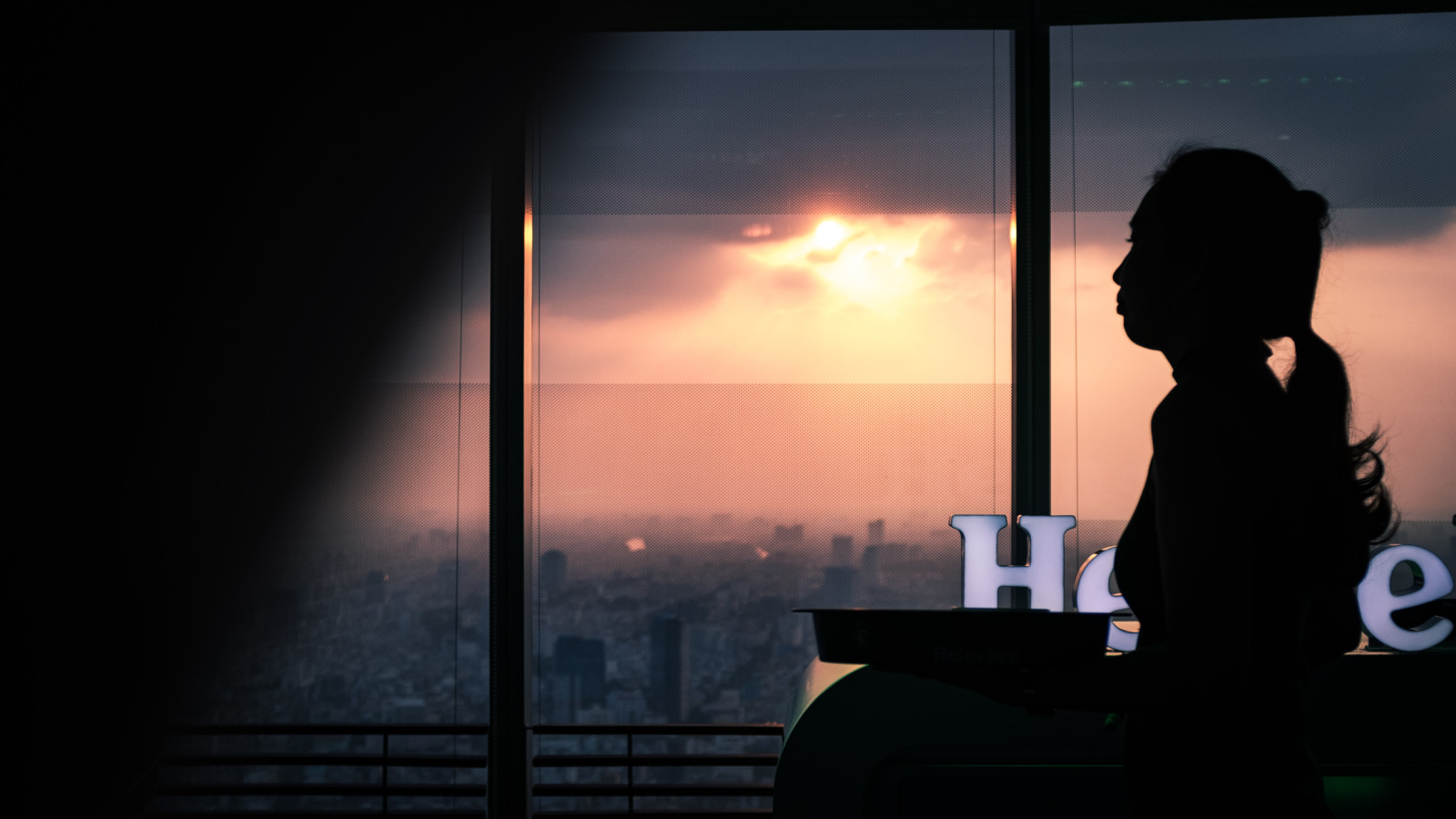
Speed
Street Photography is a very fast shooting discipline. As photographers on the street, we don’t have the time to arrange a scene carefully and tell the subject or the world around us to stop until we are ready to shoot.
For Street Photography, a camera needs to be fast as well. The camera should be quick when turned on and ready to go in a matter of milliseconds.
Once the camera is on, the auto-focus should also be quick and don’t pose any threats to our results.
Test the auto-focus also very thoroughly in low-light conditions. At night, they surely won’t work but test where the limits are and if they are already very bad during normal evening hours, compare them to other cameras and see if there are better alternatives out there.
When it comes to the speed, also check if there is a noticeable “shutter lag”.
A lag between pressing the shutter button and the camera actually taking the camera, can not only be frustrating but make You miss the decisive moment, that You were going for.
DSLRs are usually better when it comes to the lag and there is barely anyone noticed.
Modern mirrorless cameras shouldn’t have any noticeable shutter lag as well.
Nonetheless, when buying a street photography camera, make sure that the inputs are registered quickly and there isn’t any delay.
Versatility
It is great that You are looking for information regarding how to choose the best Street Photography camera for You.
Nonetheless, are You sure that You will be 100% only shooting Street Photography?
Some cameras are very specific for Street Photography. Portrait photo shoots with a RicohGR aren’t really fun, as the 28mm lens distorts heavily. Of course, it is within the realm of possibility, but You will be more limited in Your style.
If You want to buy a Street Photography camera, keep in mind, if it is also suitable for other genres, that You might want to explore in the future.
A camera with changeable lenses might be better in that case, as it allows You to change to an ultra-wide angle lens, which is better for landscapes, or to longer lenses that are more suitable for portrait photography.
Before having to invest twice and buying new systems for every genre that You want to photograph, just go for a camera that is more flexible.
A Fujifilm XE-3, for example, is relatively small, which is great for Street Photography, yet the camera system has changeable lenses which allow for more flexibility.
Keypoints
A Street Photography Camera should be small, light and unobtrusive.
The handling should be intuitive and the buttons arranged in a way, that the main functions can be changed with one hand.
The camera needs to be quick and not feature any input delay.
Those are the technical details that are important for a Street Photography Camera in general. Other than that, it is really about Your preferences and what You feel comfortable with the most.
When Buying a new camera ask Yourself the following questions.
Do I want to shoot more than Street Photography and explore other genres?
If yes, then go for a camera with changeable lenses.
Do I need an optical Viewfinder?
If yes, then a DSLR is Your only choice.
Do I want to shoot at night?
Then a camera with at least an APS-C sensor will be better for You.
Do I have lenses that are available to me and I want to try?
Then check which camera models are compatible. If there are vintage lenses You want to use, then Sony cameras offer good options with their adapters.
Those are some questions that can narrow down Your choice to a few cameras that You might look into more detailed.
From my personal experience, I know a lot of Street Photographers that are shooting with FujiFilm, but I also know Leica photographers or Olympus shooters.
All of their photographs are great and it comes down to personal preference what You are going for. Mostly I would say it is the look & feel of a camera that makes me want to use it for Street Photography.
If it feels good and I am comfortable using the camera, then it doesn’t make any difference whether the sensor offers 20 or 24 Megapixels.
You can also have a look at my Street Photography Camera guide for more information regarding specific camera models.



